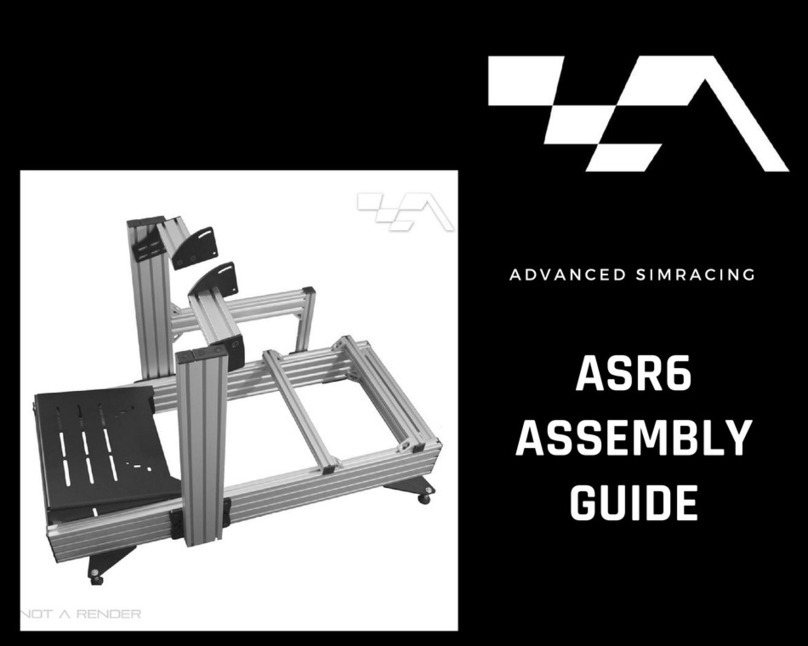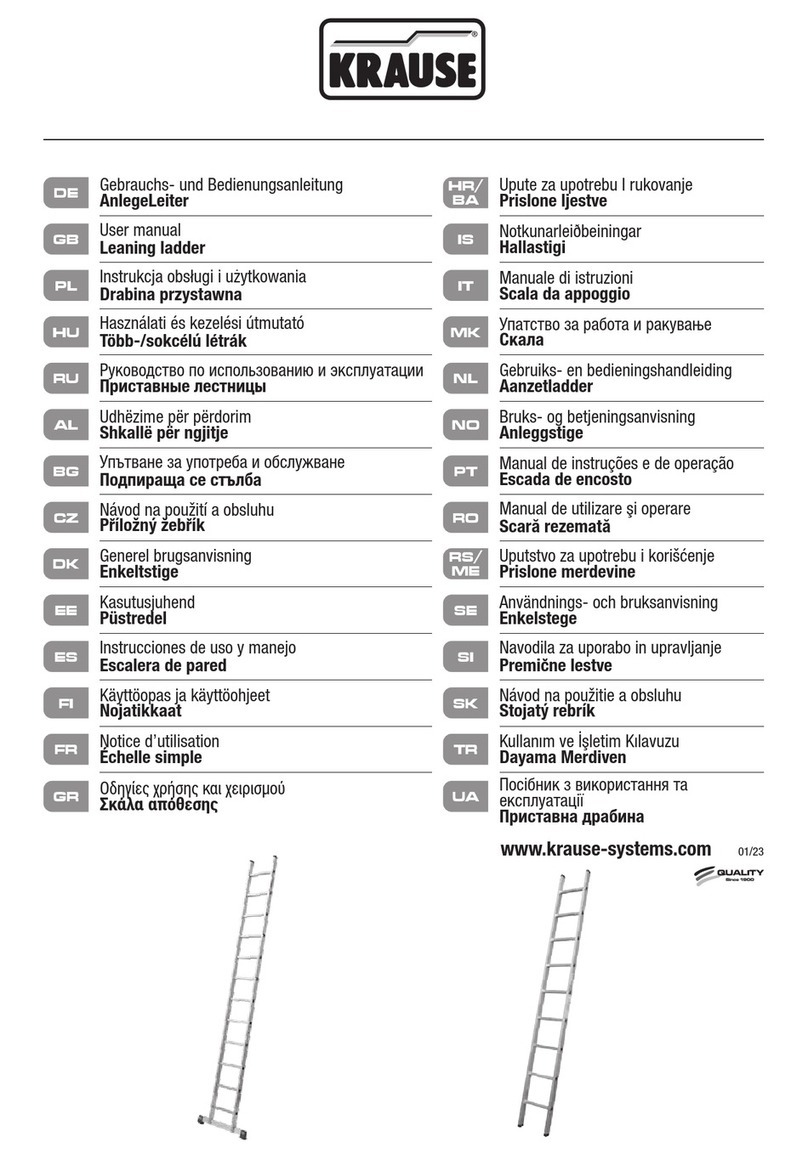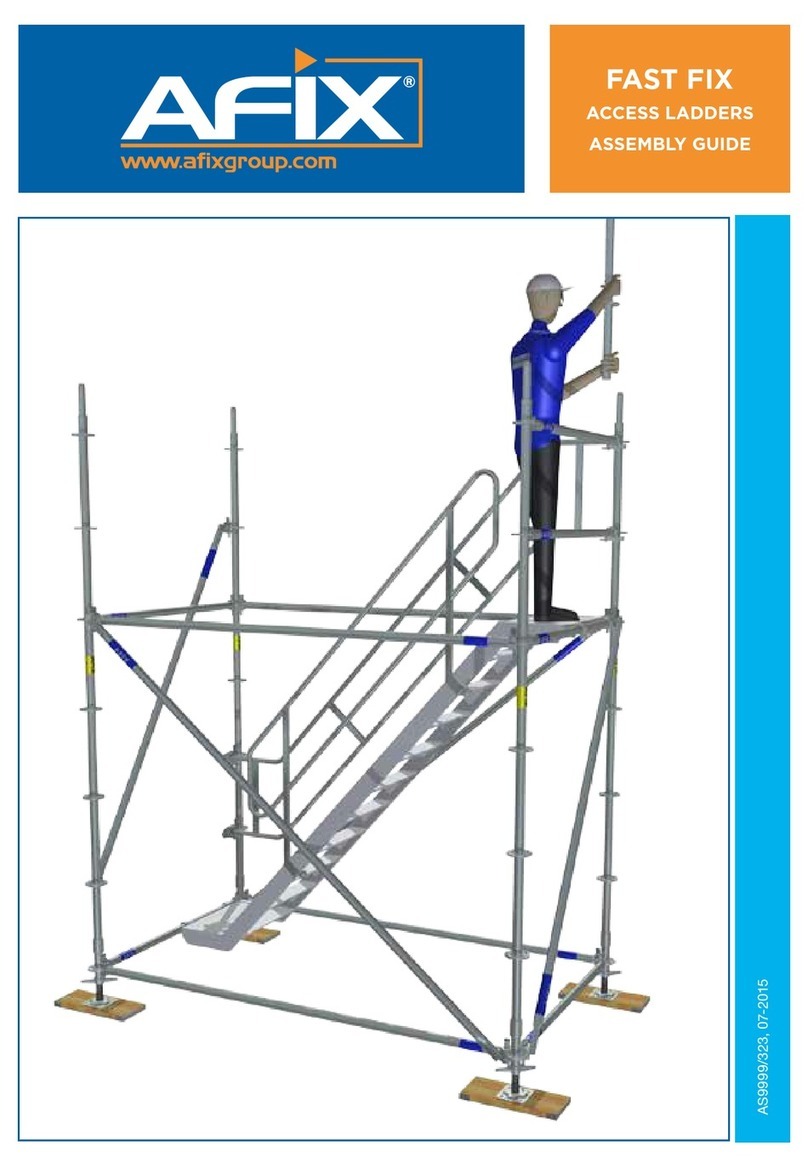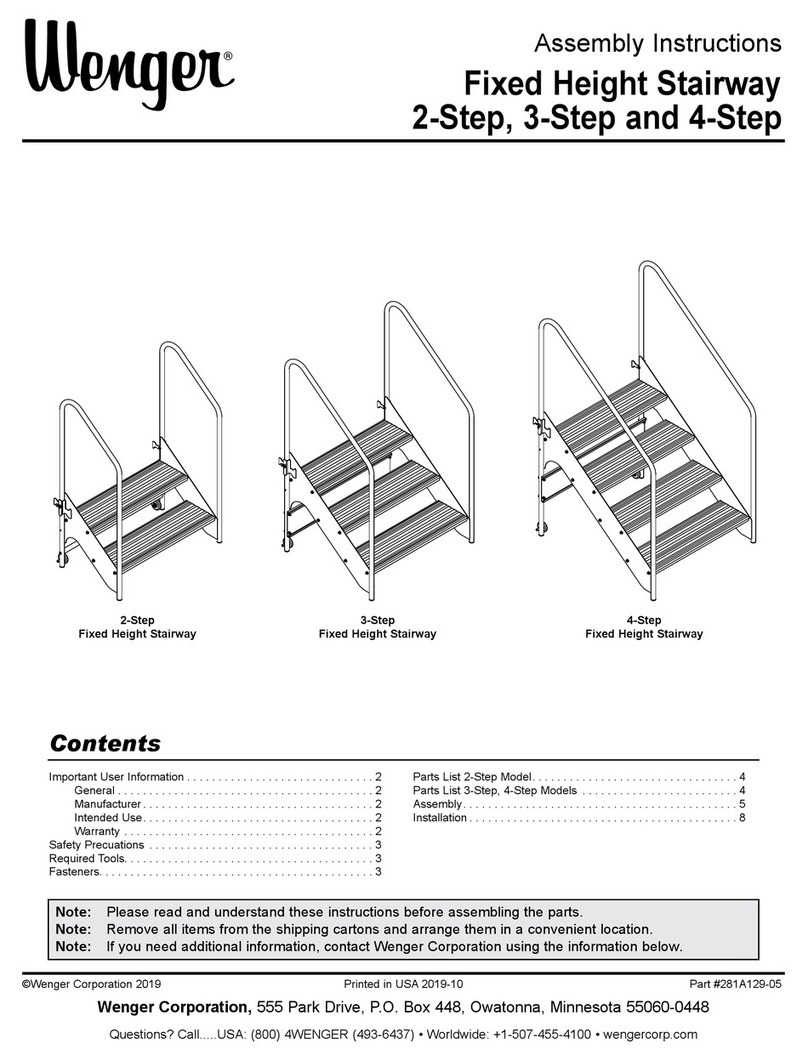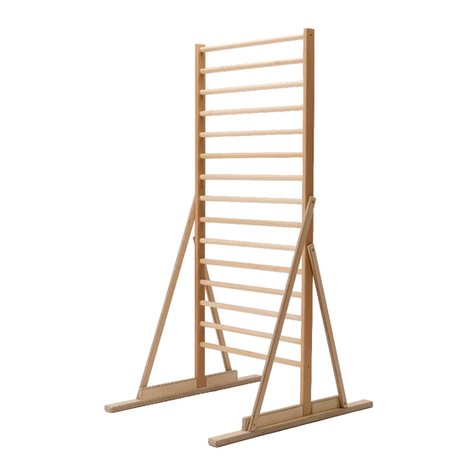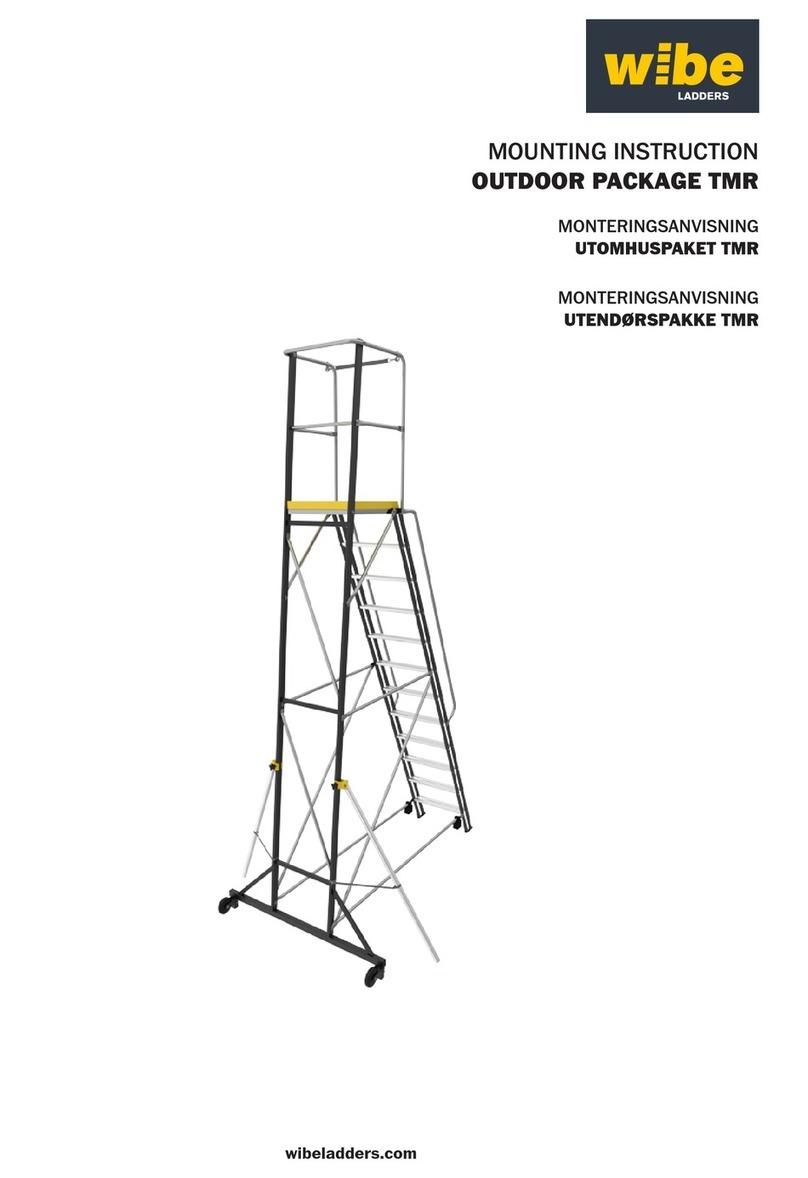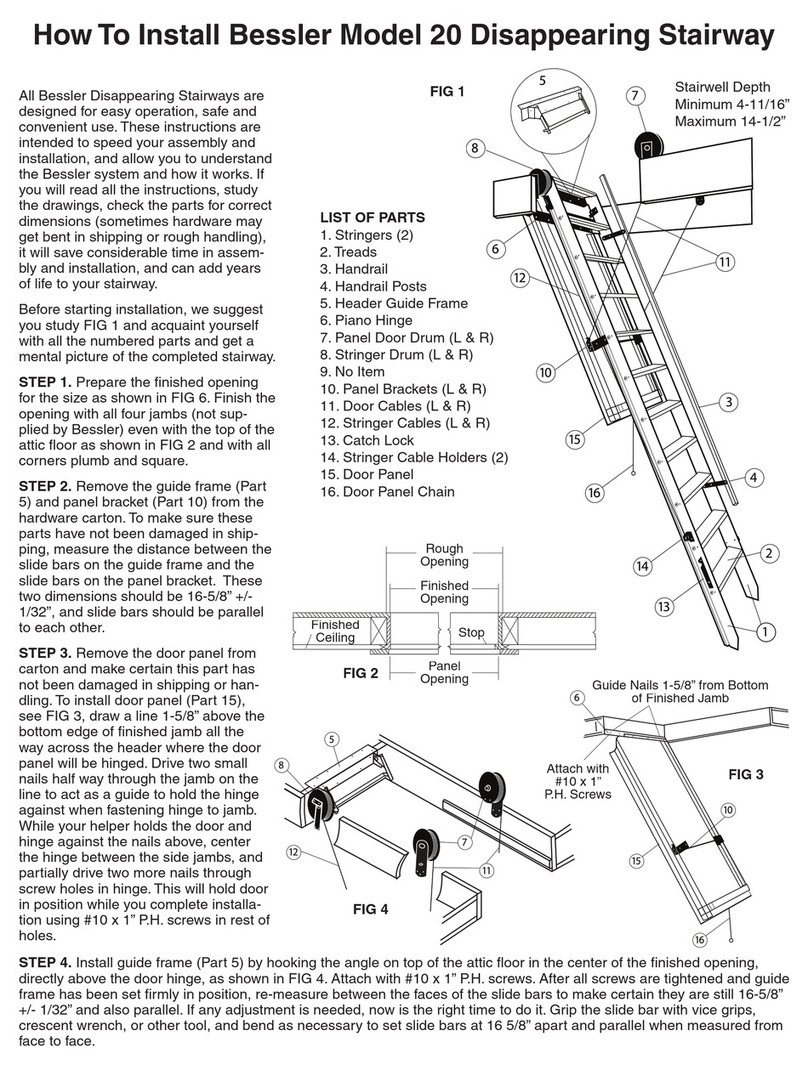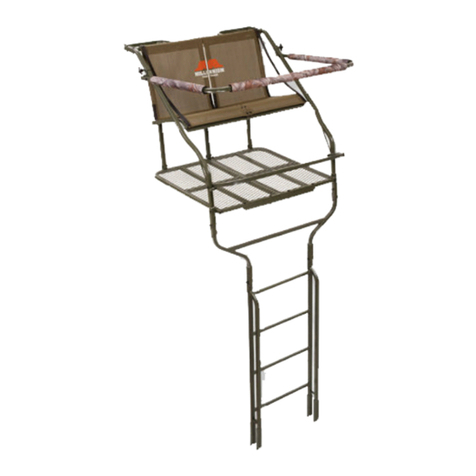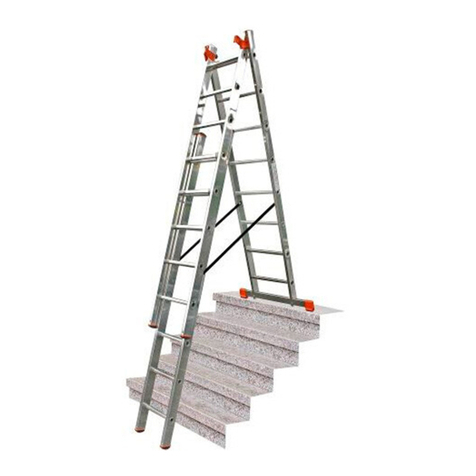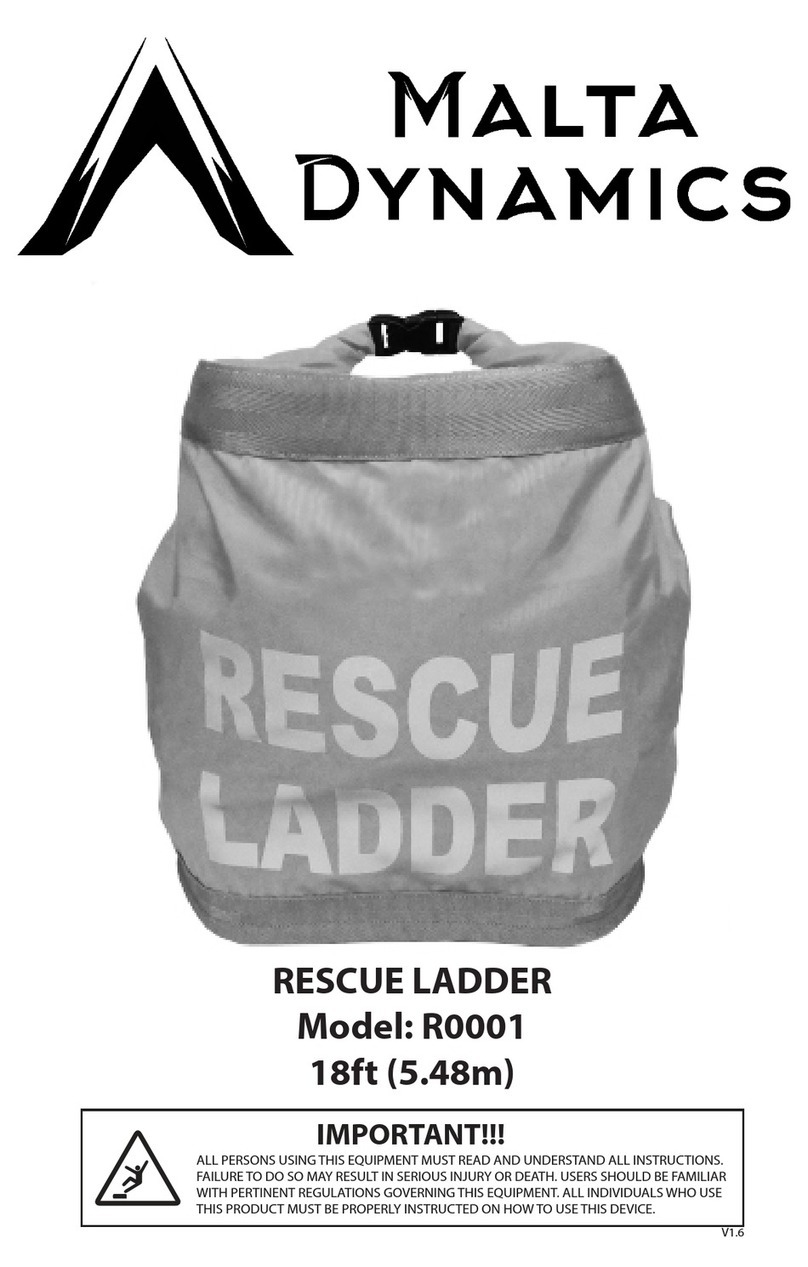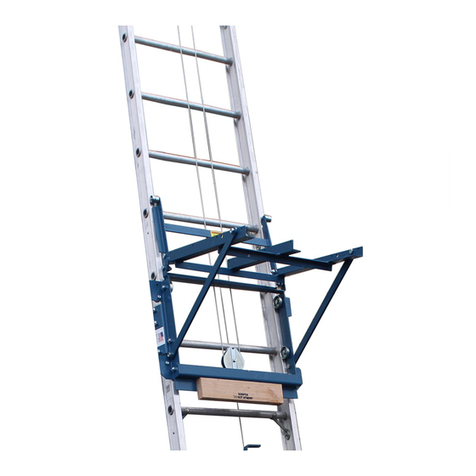
GENERAL INSTRUCTIONS AND RULES OF USE FOR YOUR SAFETY
PLEASE READ THESE INSTRUCTIONS CAREFULLY
Always inspect the ladder before each use.
Very important: Always use the ladder on a flat, horizontal, firm and non-slip surface.
RECOMMENDATIONS BEFORE USING THE LADDER
1. Before using the ladder check that all parts and pieces are working properly.
2. Before using it for daily work you must visually check the condition of the ladder for any defects that prevent it from being used
safely.
3. Do not use the ladder if any of its elements, parts or pieces are damaged, bent or broken. Do not carry out repairs on damaged
parts. If necessary replace parts that, due to their continued use, may suffer logical wear, for example, adjustment guides,
bimaterial floor support legs, etc. Repairs and maintenance must be carried out by a specialised technician, always following
the manufacturer's instructions and using original parts.
4. When it is used in the professional field, periodic verification is required by qualified personnel for this purpose.
5. Before using the ladder, check whether it is the right model for the job to be done.
6. The user should also assess the working conditions and potential risks, adding additional measures to the ladder for gripping or
support if necessary.
7. The conditions of the user must be optimal. The user’s state of health may make it dangerous to use the ladder when taking
medication, drugs or alcohol.
8. Keep the ladder well gripped when moving, using the 2 wheels whenever possible, and storing. Avoid dragging or pushing the
ladder for its change of position or transfer. Do not place items on the rungs. Store in a dry and safe place, keeping the ladder
and plastic packaging out of reach of children.
9. Remove all dirt from the ladder before using it. For example, wet paint, clay, grease, liquids, oils, ice, snow, slippery materials,
etc.
10. If at any time the ladder has been exposed to fire, a heat source or corrosion from a corrosive agent, ensure that the ladder has
not been damaged and, if it has been damaged, replace the damaged components or the ladder.
LADDER USE
1. Before starting work you must check the work area, removing anything that could be dangerous. Doors and windows in the work
area may also be blocked, with the exception of emergency exits. Never set the ladder up behind a door or close to a moving
element.
2. If the weather conditions are unfavourable i.e. strong wind, snow, ice, etc. do not use the ladder.
3. Do not use the ladder near electrical wires or sources of electricity.
4. The locking / unlocking mechanism of the hinge should be checked to ensure that it works correctly and that the fastening rivets
are tight.
5. In the position on walls, the levers for unlocking the hinges must be placed in the up position. Do not use the last 5 rungs. Always
check before climbing the ladder that the 2 hinge latches are properly locked and that the 4 height adjustment hooks are fully
inserted into the correct place. At the maximum extended height we recommend a maximum load of 100kg and the ladder must
be protected with additional measures of fixation and / or stability.
6. In the scissor position, the ladder must be completely open to the maximum the hinges allow. Do not use the last two rungs.
Always check before climbing the ladder that the 2 hinge latches are properly locked and that the 4 height adjustment hooks are
fully inserted into the correct place.
7. Go up or down facing the ladder and hold it with both hands. Whilst working, two feet must be on the same step and hold the
ladder with one hand. If this is not possible, additional safety measures must be taken.
8. You must wear appropriate footwear to climb the ladder. The sole must be non-slip and they must be clean and not worn.
9. These ladders are designed for use by one person, not overloading. If climbing with objects, they must be light, easy to handle
and have a grip that does not cause the risk of imbalance. The use of accessories is recommended to avoid having to lift items
by hand, for example, tool belts.
10. The user's body must be centered between the cross members of the ladder, avoiding lateral bending. Do not carry out work that
requires lateral force, for example, side-on drilling in solid walls, etc.
11. Ladders are designed for short and light jobs, take regular breaks as fatigue can be dangerous.
12. Keep one hand on the ladder at all times when working or take extra precautions.
13. Before going up, adjust the height of the ladder as required, pull the hooks on the side rail outwards and extend the ladder until
the desired working height is acheived. Line up the holes on the side rail and corresponding ladder rung and reinsert the 4 hooks
fully in the correct place. Check that both the outer and inner sections are securely fastened by the hooks. When making this
adjustment, place your hands on the outside of the side rail, never on the inside, nor on the steps or joints, to avoid injuring your
hands.
14. Do not use the ladder as a bridge, ramp or shelf. Do not place objects on the ladder that could cause damage.
15. Do not exceed the maximum stated load of each type of ladder and follow the manufacturer's recommendations.
LADDER PLACEMENT AND POSITION
1. In the position on walls, the ladder must be placed with an inclination angle of between 65 degrees and 75 degrees in relation to
the support plane. The hinge unlocking levers must be placed in the up position. Always check before climbing the ladder that
the 2 hinge latches are properly locked and that the 4 height adjustment hooks are fully inserted into the correct place.
2. The steps and horizontal parts of the stairs must be completely horizontal.
3. In the scissor position, the ladder must be completely open to the maximum the hinges allow. Always check before climbing the
ladder that the 2 hinge latches are properly locked and that the 4 height adjustment hooks are fully inserted into the correct
place.
4. The supporting surface of the ladder must be flat, horizontal, firm and non-slip. Do not place on smooth, polished, slippery, dirt or
fragile surfaces and materials. The user must secure the ladder before use by tying, fixing and/or placing appropriate devices to
ensure stability and safety. The ladder should not be placed on scaffolding, boxes or anything else to gain height.
5. Do not move the ladder with a person on it or attempt to move the ladder whilst working on it.
6. Never set the ladder up behind a door or close to a moving element.
7. When the ladder is used to climb onto a higher surface, such as a roof, its positions are very risky and require the placement of
the ladder with additional safety devices to ensure stability and firmness. The ladder must extend at least one metre above the
base or support line of the wall surface.
8. In the wall position, always support the ladder on a firm surface much larger than the width of the ladder.
9. Do not use the ladder near electrical wires or sources of electricity.
Please keep these instructions for safe use of the ladder or download directly from our website using the QR code.
At the end of the useful life of the product, please take both this document and the ladder to an appropriate recycling centre.
The manufacturer reserves the right to introduce any updates it deems appropriate without prior notice.
Telescopic Multi Purpose Ladder

